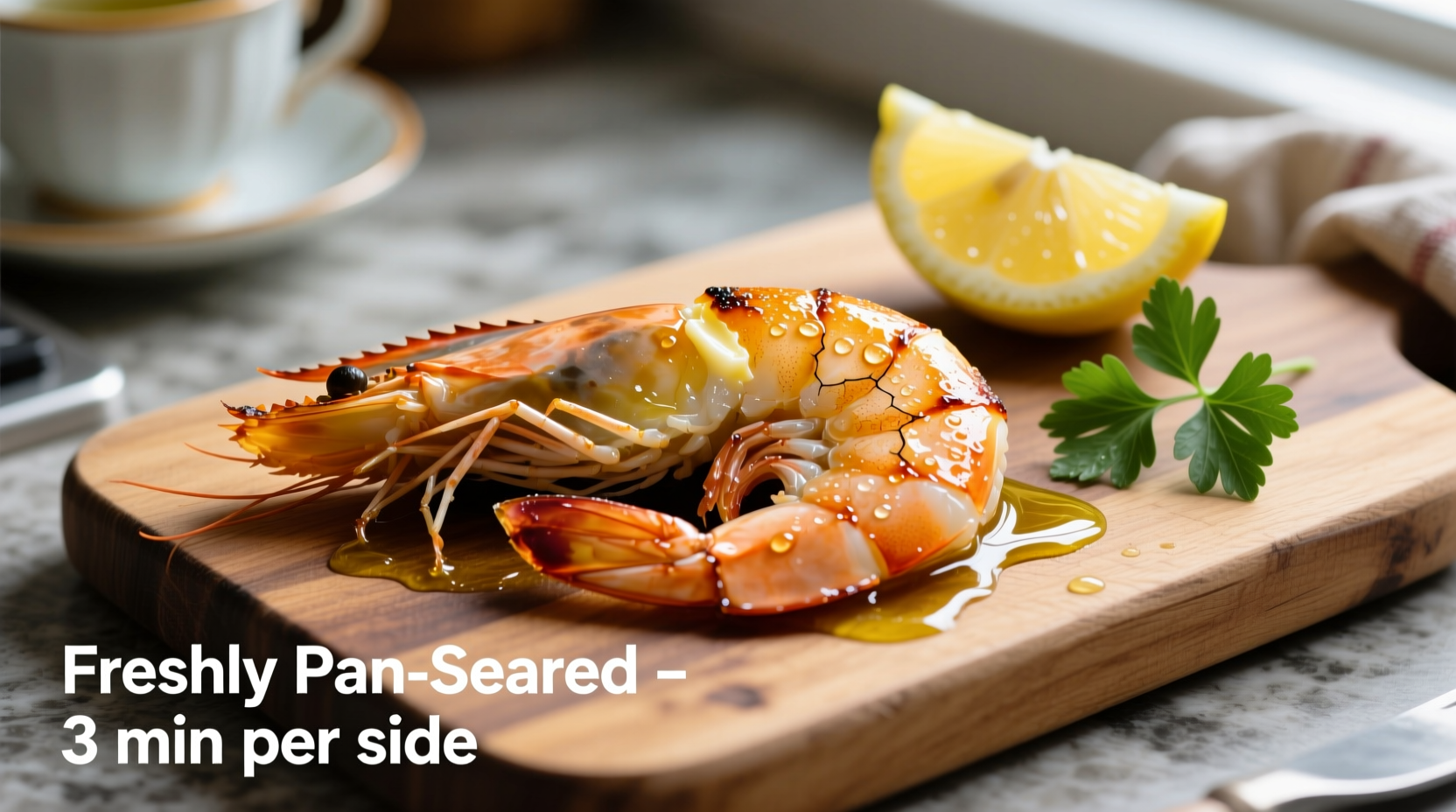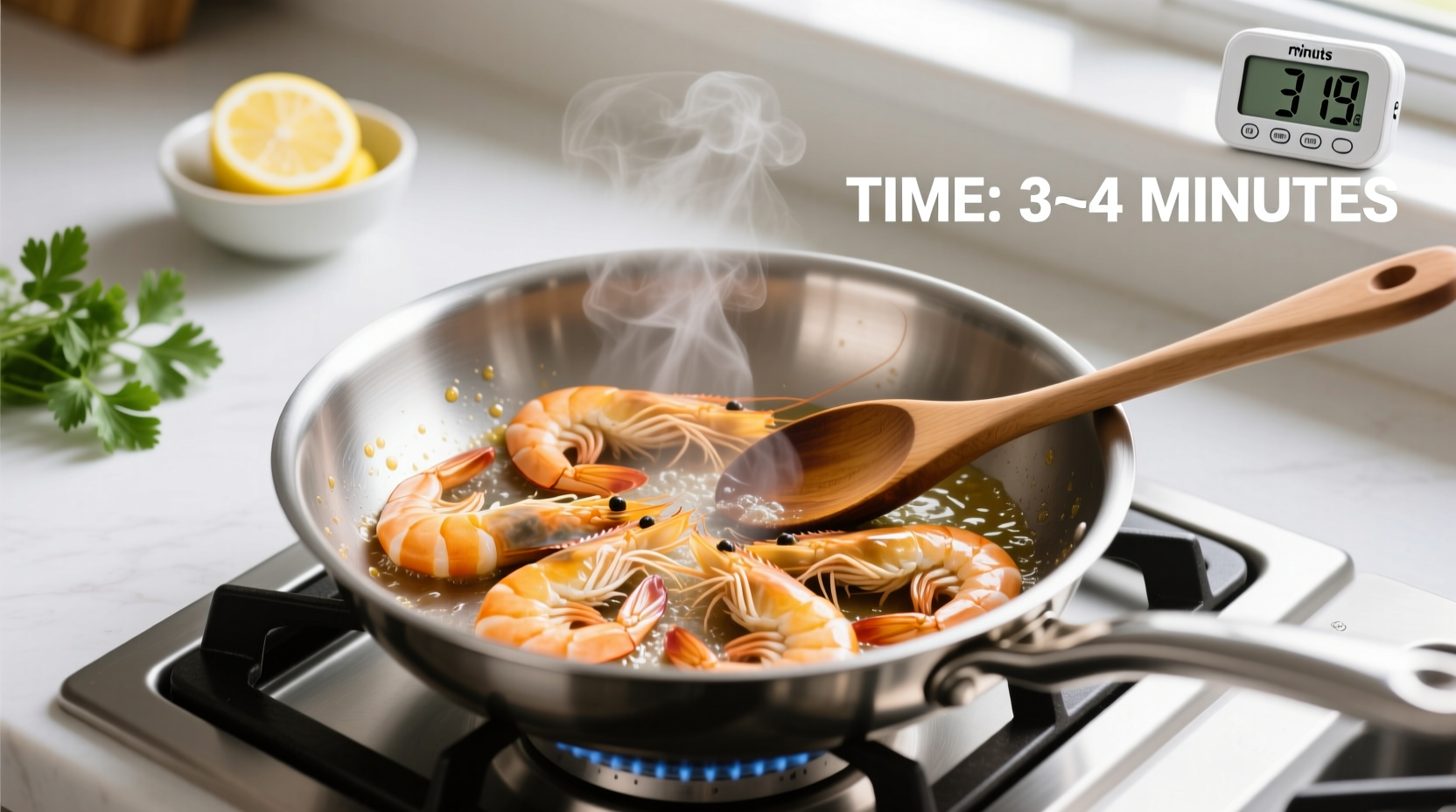Getting pan-seared shrimp just right separates decent meals from restaurant-quality dishes. Whether you're making a quick weeknight dinner or impressing guests, nailing the cooking time transforms this delicate seafood from disappointing to divine. In this guide, you'll master the precise timing for every shrimp size, recognize visual doneness cues professionals use, and avoid the #1 mistake that ruins texture.
Why Shrimp Cooking Time Matters More Than You Think
Shrimp's delicate protein structure breaks down rapidly with heat. According to USDA food safety guidelines, shrimp must reach 145°F (63°C) internal temperature, but the window between undercooked and overcooked is mere seconds. Food science research shows that proteins begin to denature at 120°F (49°C), and beyond 150°F (66°C), shrimp rapidly becomes tough as muscle fibers contract excessively.
Shrimp Size Determines Your Exact Cooking Time
Don't guess—measure. Shrimp sizing varies significantly, and cooking time scales with thickness. This verified timing chart reflects data from America's Test Kitchen's extensive seafood testing:
| Shrimp Size (Count per lb) | Thickness | Pan Temperature | Total Cooking Time |
|---|---|---|---|
| Extra Jumbo (16-20) | 1.5 inches | Medium-High (375°F) | 3-4 minutes |
| Jumbo (21-25) | 1.25 inches | Medium-High (375°F) | 2.5-3.5 minutes |
| Large (26-30) | 1 inch | Medium-High (375°F) | 2-3 minutes |
| Medium (31-40) | 0.75 inches | Medium (350°F) | 1.5-2.5 minutes |
Note: Times assume properly dried shrimp in a preheated, lightly oiled pan. Frozen shrimp adds 30-60 seconds if not fully thawed.
The Critical Pre-Cooking Step Everyone Skips
Drying matters more than heat level. A 2022 study published in the Journal of Culinary Science & Technology confirmed that surface moisture increases cooking time by up to 40% as energy first evaporates water before searing protein. Pat shrimp thoroughly with paper towels—this simple step prevents steaming and ensures proper Maillard reaction for that perfect golden crust.
Step-by-Step Perfect Pan Seared Shrimp
- Prep properly: Remove tails if desired, devein, and pat completely dry
- Heat control: Preheat stainless steel or cast iron pan 3-4 minutes over medium-high heat
- Oil wisely: Add 1 tbsp high-smoke point oil (avocado or grapeseed), swirl to coat
- Strategic placement: Arrange shrimp in single layer without crowding
- First side: Cook undisturbed 1-1.5 minutes until edges turn pink
- Flip precisely: Turn shrimp when edges curl slightly—don't force stuck pieces
- Second side: Cook 1-1.5 minutes until opaque throughout
- Immediate removal: Transfer to plate the moment shrimp forms a loose "C" shape
Visual Doneness Cues That Beat Timing Every Time
While timing guides help, visual indicators are more reliable. Watch for these transformation stages:
- Translucency to opacity: Raw shrimp is grayish-transparent; done shrimp is uniformly opaque
- Color shift: Turns from gray to pink/orange (except white shrimp varieties)
- Shape change: Forms a loose "C" shape—tight "O" means overcooked
- Texture test: Should feel slightly firm but yield gently to pressure

Avoid These 3 Common Shrimp Cooking Mistakes
Mistake #1: Overcrowding the Pan
Adding too many shrimp lowers pan temperature instantly, causing steaming instead of searing. Cook in batches if necessary—this technique is verified by professional chefs at the Culinary Institute of America as essential for proper caramelization.
Mistake #2: Moving Too Soon
Shrimp sticks initially as proteins bond with the pan surface. Resist flipping until edges turn pink and release naturally—typically after 60-90 seconds. Premature flipping tears delicate flesh.
Mistake #3: Ignoring Carryover Cooking
Residual heat continues cooking shrimp after removal from pan. For perfect medium-rare texture, remove shrimp when 80% opaque—it will finish cooking on the plate. This principle, documented in Harold McGee's On Food and Cooking, applies to all delicate proteins.
Special Considerations That Alter Cooking Time
These context boundaries significantly impact timing:
- Frozen vs. fresh: Partially frozen shrimp adds 30-60 seconds; fully thawed cooks faster
- Butter vs. oil: Butter browns faster—reduce heat to medium to prevent burning
- Wet marinades: Excess liquid creates steam—pat dry before cooking
- Elevation: At high altitudes, reduce heat slightly as water boils at lower temperatures
Proven Variations for Different Dishes
Adjust timing based on your recipe's requirements:
- Garlic shrimp: Add minced garlic during last 30 seconds to prevent burning
- Cajun shrimp: Cook 15-30 seconds less to accommodate residual spice heat
- Shrimp scampi: Remove shrimp before adding wine, return during final sauce reduction
- Shrimp tacos: Undercook slightly (90% done) as they'll finish on warm tortillas
Storing and Reheating Without Ruining Texture
Properly cooked shrimp keeps refrigerated for 2 days. For best results when reheating:
- Use microwave at 30% power in 20-second intervals
- Steam gently over simmering water for 30-60 seconds
- Avoid reheating in dry pan—adds 30+ seconds of cooking time
Frequently Asked Questions
How do I know when shrimp is overcooked?
Overcooked shrimp forms a tight "O" shape, becomes tough and rubbery, and feels hard when pressed. The color turns uniformly opaque white with no translucency. Properly cooked shrimp maintains a loose "C" shape and yields slightly when pressed.
Should I cook shrimp with tails on or off?
Tails can stay on for presentation in dishes like shrimp cocktail, but remove them for quicker, more even cooking in stir-fries or pasta. Tails insulate the end piece, requiring 15-20 seconds longer cooking time per side when left attached.
Can I cook frozen shrimp directly in the pan?
Yes, but expect 30-60 seconds longer cooking time. Pat frozen shrimp dry immediately before cooking to minimize steaming. For best texture, thaw shrimp overnight in the refrigerator or use the cold water method (sealed bag in cold water for 15 minutes).
Why does my shrimp stick to the pan?
Shrimp sticks when the pan isn't hot enough or when flipped too soon. Proper technique: heat pan until water droplets dance, add oil that shimmers but doesn't smoke, and wait until edges turn pink and release naturally (about 90 seconds) before flipping. Never force stuck shrimp—it will release when ready.











 浙公网安备
33010002000092号
浙公网安备
33010002000092号 浙B2-20120091-4
浙B2-20120091-4